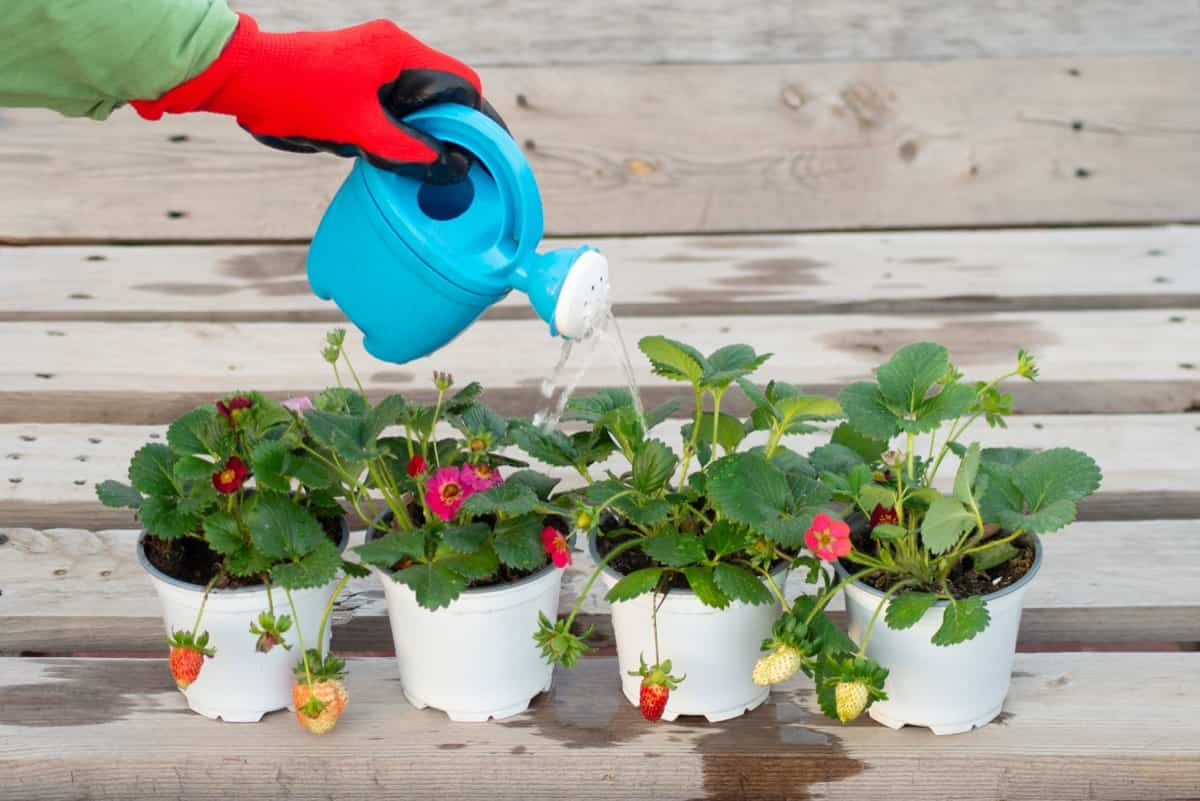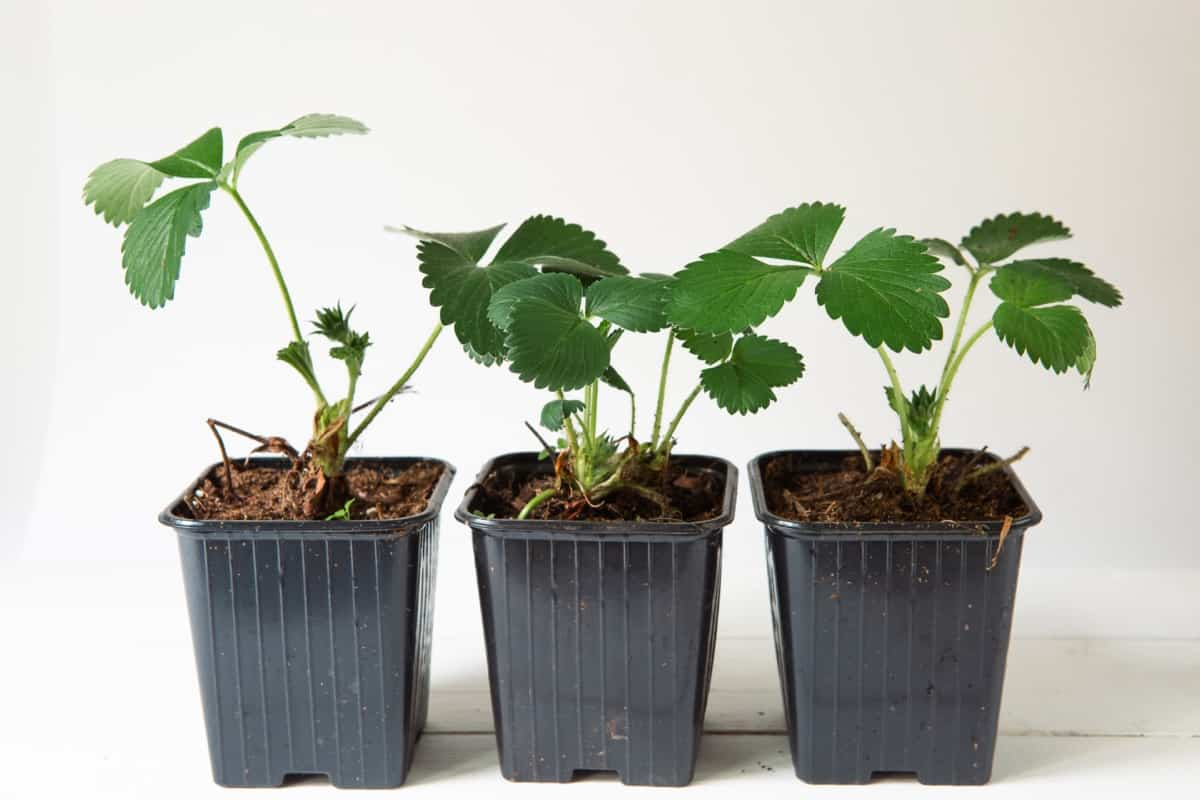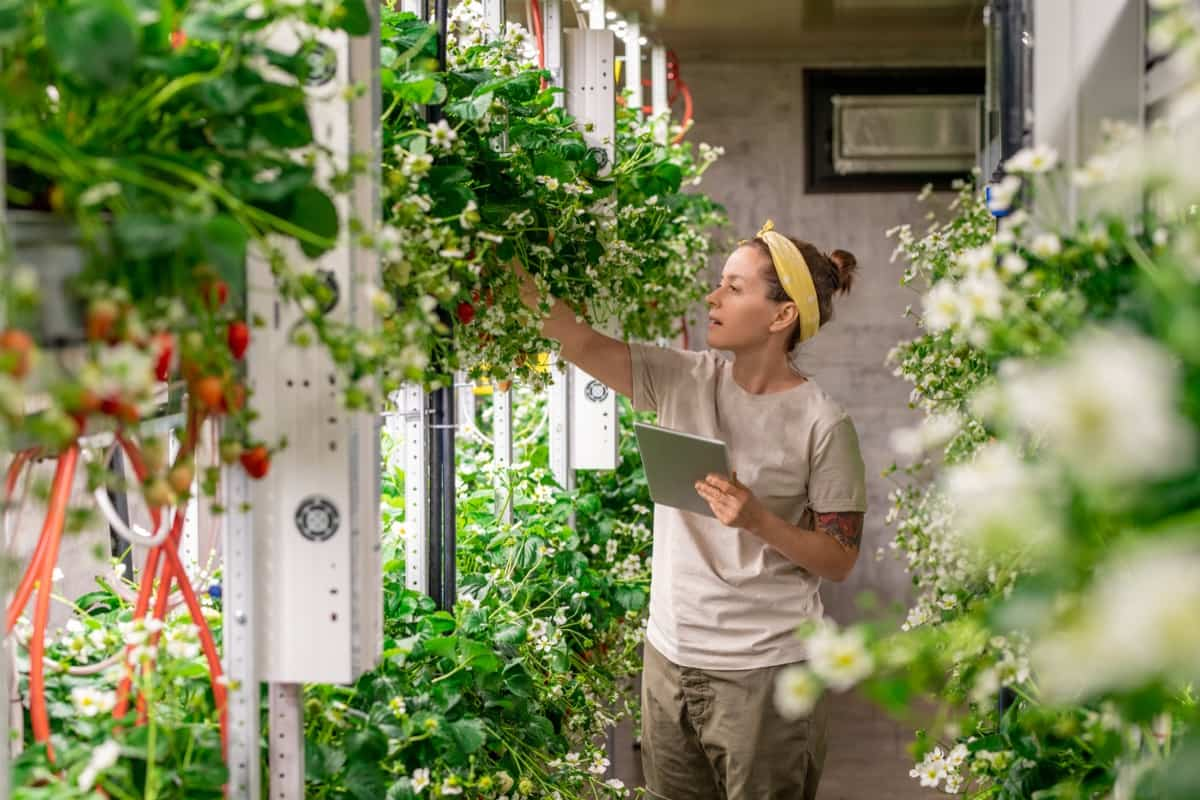Strawberries are an attractive fruit to grow in your indoor garden as they are delicious and easy to grow. Growing strawberries indoors can be a fun and rewarding experience, allowing you to enjoy fresh, juicy strawberries all year round. Whether new to gardening or an experienced green thumb, planting strawberry seeds indoors can be done easily.

Here are the steps to planting strawberry seeds indoors step by step. Below we learn how to start strawberry seeds indoors, when to start strawberry seeds indoors, and a step-by-step guide on how to grow strawberry seeds indoors.
How to plant Strawberry seeds indoors: Step-by-step guide
Preparation: The first step in planting strawberry seeds indoors is to prepare the containers for the seeds. Strawberry seeds can be planted in various containers, such as pots, trays, or seedling starter packs. The containers should be suitable to allow the seeds to grow without overcrowding and have holes in the bottom for proper drainage.
Selecting the soil: Once the containers are ready, it is time to select the soil to use. The soil should be well-draining, rich in nutrients, and free of pathogens. A high-quality seed-starting mix is the best option for planting strawberries, but you can also use a mix of peat moss and vermiculite.
Planting the seeds: Once your soil is ready, it is time to plant the seeds. Fill the containers with the soil, leaving a small depression in the center. Place a few seeds in each depression, covering them with a small amount of soil. Do not over-pack the soil, as this can prevent the seeds from sprouting.
Watering: After planting the seeds, it is essential to water the soil carefully. Too much water can cause the seeds to rot, so be sure to water gently, avoiding soaking the soil. A spray bottle is the best option for watering the seeds as it provides a gentle and controlled water application.
Lighting: Strawberries need much light to grow, so it is essential to place the containers in a location that receives plenty of sunlight. If you do not have a location that gets enough light, you can use grow lights to provide the necessary sunlight. The lights should be placed close to the containers but not so close that they scorch the seeds.
In case you missed it: How to Germinate Strawberry Seeds in a Paper Towel: A Beginners Guide

Temperature: Strawberries like a cool environment, so keeping the containers in a location that is not too warm is essential. A temperature range of 60-70°F is ideal for strawberries. If you are planting the seeds in a location that is too warm, you can place the containers in a cooler area or use a fan to create a cooling breeze.
Maintenance: Once the seeds have been planted, it is essential to maintain the containers properly. Fertilize the plants and keep the soil moist. You can use a balanced liquid fertilizer or a slow-release fertilizer to provide the necessary nutrients.
Germination: Strawberry seeds can take several weeks to germinate, so be patient. As the seeds begin to sprout, you can increase the light and reduce the amount of water. When the plants have developed their first true leaves, they can be transplanted into larger containers.
Transplanting: Transplanting the strawberries into larger containers is the final step in planting strawberry seeds indoors. Choose containers at least 6 inches in diameter, and fill them with a quality potting mix. Carefully remove the seedlings from the smaller containers and place them into the new containers, careful not to damage the roots.
Caring for the plants: Strawberries must be consistently moist but not waterlogged. Water the plants when the soil feels dry to the touch, and empty any water that accumulates in the saucers. Strawberries must be fertilized regularly to ensure they receive the necessary nutrients for growth. You can use a balanced liquid fertilizer or a slow-release fertilizer to provide the necessary nutrients.
Pruning the strawberry plants regularly will help to promote healthy growth and improve the yield. Cut off any yellow or damaged leaves, and remove any runners not producing fruit. Strawberries can be susceptible to pests such as aphids, mites, and slugs. Regular monitoring of the plants and using organic methods, such as neem oil, can help to control these pests.
Frequently asked questions on growing Strawberries (FAQ)
What is the best way to grow Strawberries seeds?
Sow the small seeds in a shallow pot or seed-starting flat with a fine mix. Spread the seeds all over the soil. Keep the soil level low; the seeds need light to germinate. The soil should be misted once a day to maintain a consistent, but the not excessive, level of moisture. Do not overwater since this can cause the seeds to sink too deeply into the soil, preventing them from germinating.
Light up the area above the seeded flat. Germination rates can be increased by placing a grow lamp or shop light approximately 6 inches above the flat. Temperatures around 70 degrees Fahrenheit are optimal for strawberry seed germination.
Should I soak Strawberry plants before planting?
Bare root bundles of strawberries are available. When your plants arrive, take them out of their bundles, prune off the dead top leaves, and soak the roots for at least an hour in water before planting. If possible, plant them in the early spring while the soil is still chilly, moist, and sunny. Spread the roots wide and keep them pointing downwards. (You can cut the roots to around 4.5 to 6 inches if they are too long, then replant them.) Make sure the crown is flush with the soil while planting. Do not sow your seeds too deeply or too shallowly.
In case you missed it: How to Plant Strawberry Seeds Outdoors: Growing, Care, and Harvest

What is the fastest way to grow Strawberries?
There are several excellent options for gardening, including in-ground plots, raised beds, and containers. It’s recommended to leave 18 inches between strawberry plants to allow for runners. Regardless of your method, strawberries need at least 8 hours of sunlight daily and soil with a pH of 5.5 to 6.8 to thrive. To improve your native soil’s quality, including a few inches of compost or other mature organic matter. When planting in pots, think about purchasing a high-quality bagged potting mix.
Conclusion
If you follow the instructions above, you’ll have strawberry plants that are both healthy and beautiful in a contained setting, where they’ll get optimal conditions for growth. Always sow new, high-quality seeds and give your plants plenty of water and sunlight. Grow a bumper harvest of succulent strawberries in your backyard with little time, effort, and care.
- Ultimate Guide to Ossabaw Island Hog: Breeding, Raising, Diet, and Care
- Ultimate Guide to Juliana Pig: Raising Facts, Size, Diet, Care, and Lifespan
- Raising Lleyn Sheep: Disadvantages, Price, Uses, Characteristics, and Care
- Ultimate Guide to Meishan Pig: Breed Facts, Breeding, Raising, and Care
- Ultimate Guide to Teacup Pigs: Raising, Diet, Lifespan, Cost, and Care
- Guide to Raising Poll Dorset Sheep: Facts, Profile, Characteristics, Uses, and Care
- Ultimate Guide to Bighorn Sheep: Characteristics, Diet, Lifespan, Breeding, and Lifecycle
- Ultimate Guide to Raising Katahdin Sheep: Farming Facts, Breed Profile, Uses, and Care
- Ultimate Guide to Raising Oreo Cows: Belted Galloways Farming Facts, Profile, Uses, and Care